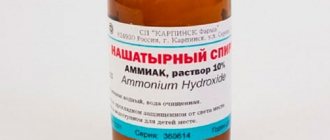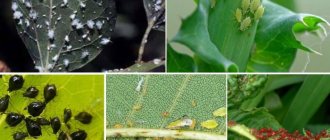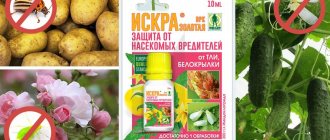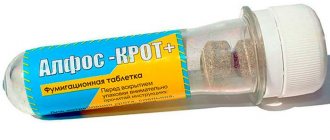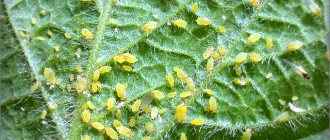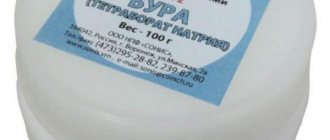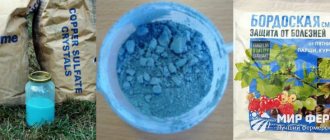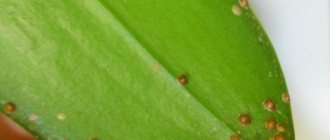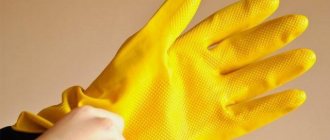Indoor flowers are planted in mineral-rich soil, which loses its properties over time. Fertilizers are washed away during the moistening process, and plants require replenishment for normal growth. There are special complexes: organic, mineral, folk remedies, with the help of which you can significantly improve their growth and flowering. One effective remedy is ammonia (ammonia). It can be purchased at any pharmacy and used for feeding and spraying home flowers.
Beneficial properties of ammonia for house plants
Ammonia has properties due to which it is successfully used in floriculture and gardening to fertilize plants. The product is used as a source of nitrogen, the main component of the organelles of indoor plants. They can only absorb it from the soil (in bound form).
Many potted flowers respond well to ammonia as a source of nitrogen: hydrangeas, geraniums, clematis, cyclamen, lilies. It is responsible for the full development of all green parts of plants.
Regardless of the method of use, ammonia has a positive effect on houseplants, this manifests itself in the form of:
- active growth;
- bright green foliage;
- abundant flowering.
In addition to enriching the soil, ammonia also disinfects it, and in some cases even helps get rid of small insects. Among them:
- mole cricket;
- aphid;
- weevil;
- spider mite;
- onion fly.
Many flower growers use ammonia in flower care because of its availability and effectiveness. It is a powerful prophylactic in the fight against certain fungal infections.
Ammonia for indoor plants. Vitamins for plants
They are needed for health and proper development not only by people, but also by plants. Using the vitamins in your medicine cabinet, you can make nutritious food for your plants. Vitamins from group B, as well as vitamin C, or simply ascorbic acid, are well suited for these purposes. Just don’t get carried away with watering with “vitamin” water; plants, like people, can develop hypervitaminosis. One watering every 3 weeks will be enough.
Vitamins from group B have a good effect on the plant, speed up metabolism, strengthen roots, and under their influence plants grow and develop better.
Vitamin B1 helps plants survive stressful conditions and also stimulates their growth. For feeding, prepare a solution of 1 ml of vitamin diluted in a liter of water.
Vitamin B3 (or nicotinic acid) is excellent for resuscitating plants. The solution is prepared in the proportion of 1 ml of vitamin per liter of water. You can enhance it with other vitamins, for example B1 or B6.
Vitamin B6 stimulates the immune system of plants and will help save weakened and diseased flowers.
The solution is prepared in the same proportion as vitamin B3.
Vitamin B12 is involved in the production of chlorophyll, activates the growth and metabolism of plants. Use 1 ml of vitamin per liter of water.
Vitamin C (or ascorbic acid) helps plants resist various diseases, just like it does in humans. Vitamin C will also help in the fight against chlorosis. Ascorbic acid regulates important metabolic processes, affects water metabolism and can even control plant growth. For vitamin watering, dissolve an ascorbic acid tablet in a liter of water.
To feed indoor plants, you can use not only vitamins from the pharmacy, but also other common substances that are used in everyday life for fever and cuts. Even ammonia, which is used for fainting, to bring a person to his senses so that he can go to work caring for house plants.
Why and in what cases is it used?
The life cycle of all plants includes the process of growing foliage, flowering and fruit formation. Nitrogen-type fertilizers help cope with this task and replenish the need of indoor flowers for this component.
Signals indicating the need for feeding with ammonia are the following signs:
- thin stems;
- slow growth;
- excessively small leaves;
- falling of the ovaries;
- yellowing of leaves in the bottom row.
Attention! If such manifestations are noticed, it is necessary to introduce compositions containing nitrogen into complementary foods. As an alternative, ammonia can be used.
The importance of fertilizers for indoor plants
No matter how large and comfortable the pot chosen for the plant is, the volume of soil in it is limited. The area available for the growth of a plant's root system is many times less than what it has in its natural environment. This speaks to the importance of not only timely replanting, but also proper fertilization.
Use ammonia as a source of ammonia
In the wild, even if they find themselves in difficult conditions with poor soil, plants receive minerals due to the fact that their roots grow wider and deeper. House flowers do not have this option. But it’s easy to create favorable conditions with the help of fertilizing. Moreover, it is not at all necessary to spend money on expensive drugs. If you carefully study the properties of known fertilizers and their composition, you can choose an alternative from what is found in almost any home.
Thus, fertilizing with ammonia can replenish the nitrogen needs of domestic plants. This element plays an important role in the process of photosynthesis and affects plant growth.
The effect of watering with ammonia on indoor flowers and soil
Ammonia has a wide spectrum of effects on plants and soil. Its use is advisable in a number of cases, including:
- feeding The introduction of ammonia into complementary foods promotes the active growth of some plant species. In addition, it helps restore the flower after the winter period;
- pest control. Fertilizing with this product is a good preventive measure against certain types of insects. The composition penetrates deep into the substrate and has a cumulative effect. Flowers treated with ammonium solution are, as a rule, not susceptible to attack by insects and midges;
- prevention of soil acidification. Ammonia is a moderately active alkaline agent, so when using it you do not have to resort to liming the substrate. After feeding with this product, nitrogen compounds do not accumulate in plants;
- soil reclamation. If a flower has been growing in the soil for a long time and is not replanted, then the soil loses its supply of microelements. At the same time, it becomes unsuitable for growing indoor plants. Thanks to the use of ammonia, the period of soil restoration passes much faster, and the recovery period of plants is noticeably reduced.
Important! If garden trees are treated with ammonia, the fruit must be thoroughly washed before use.
Preparation of solution and dosage
In order not to harm indoor plants, it is important to calculate the required amount of ammonium solution. Moreover, for different types of fertilizing its certain concentration is used. Thus, a low-concentrated composition is used to spray leaves, and a high concentration is used to fertilize the soil.
Ammonia is appropriate in the following cases:
- prevention and control of insect pests;
- disinfection of flower pots;
- Direct feeding of soil and greenery.
The fertilizer concentration option depends on the reason for its use.
Rules for using ammonia
Ammonia is a unique remedy that has a dual effect. It is both a biocide that prevents the development of insects and a fertilizer. Today, there are not many fertilizers on the market that can be compared in their properties to ammonium solution. The product is used for spraying, protection against parasites and feeding.
For spraying
If the plant is fertilized by spraying, a low-concentrated solution is used. For this, 1 tbsp. l. ammonia is diluted in 5 liters of cold water. The composition is sprayed with a spray bottle onto the leaves and stem.
When spraying home flowers, the following rules must be observed:
- do not use a highly concentrated composition, as this may cause burns to the leaves;
- do not allow contact with buds and flowers;
- use fine sprays.
Attention! If the ammonium solution does get on the flowers or buds, they need to be washed out of the sprayer with water at room temperature.
For protection against parasites
Even if flowers grow only indoors, they can still be affected by insect pests brought in, for example, with purchased soil or from neighboring plants. In this case, it is also recommended to use ammonia.
The product needs to be diluted in different ways - it directly depends on the type of pest:
- aphid. This insect is very dangerous, since its food is the juice of domestic plants. Using an ammonium solution you can completely get rid of this parasite. For this you need 1 tbsp. l. Dilute the product in 3 liters of water. Use for root feeding;
- weevil. Despite its small size, this bug eats all parts of plants, including the root system. You can get rid of it by mixing 1 tsp. ammonia in 1 liter of water and treat flowers once a week;
- Drosophila (soil midge). These insects are characterized by rapid spread, and at different stages of their development, so the fight against them must be effective. The flower is treated weekly with a concentrated composition (1 tablespoon of ammonia per 1 liter of water) until the fruit flies completely disappear.
Peculiarity! The ammonium solution remains in the treated soil for a long time, so it is a good preventive measure against the emergence of new pests.
For feeding
It is necessary to fertilize indoor flowers with ammonium in the following cases:
- there are signs of nitrogen starvation;
- leaves turn yellow and dry;
- to increase leaf density;
- in the absence of flowering.
With such signs, it is necessary to dissolve 1 tbsp. l. ammonia in 1 liter of water and water the flower under the root system.
Attention! During the period of bud formation, ammonia can be used as a fertilizer, but oversaturation of the soil with nitrogen should be avoided. For this you need 1 tbsp. l. dissolve ammonia in 4 liters of water.
Ammonia for petunia. Fertilizing with ammonia
Who doesn't know about ammonia? “Ammonia” is used not only in medicine, but also in household chores. Quite often, car enthusiasts use it to clean optics and car windows; housewives use ammonia to make laundry detergent in their dachas and “renew” the look of furniture. Gardeners and flower growers use ammonia to feed plants, disinfect greenhouses and control cabbage pests.
In terms of its chemical composition, “ammonia” is an ammonium solution, that is, an infusion of ammonia or nitrogen fertilizer. It is recommended to use ammonia if there is a lack of nitrogen in the soil. Try to wear a respirator when using ammonia.
Feeding indoor plants with ammonia
Houseplants themselves often signal that there is little nitrogen in the soil: their leaves grow poorly, turn yellow and fall off prematurely. A solution of ammonia will help restore nitrogen balance.
How to feed indoor plants with ammonia:
- dissolve 1 tbsp in 2 liters of water. l. ammonia;
- water the soil in the pot,
- consumption: 150 g of solution per 1 plant.
There is no need to wait until the leaves lose their typical color and begin to fall off. Nitrogen in the form of dissolved ammonia can be added regularly once a week. The prophylactic dose can be halved. Lilies, geraniums, clematis and hydrangea are especially fond of nitrogen fertilizing.
For more information on how to properly feed your favorite flowers and how to feed them, read the articles:
- Fertilizers for indoor plants
- Yeast, sugar, coffee and onions for feeding indoor plants
Fertilizing onions with ammonia
Ammonia stimulates the active regrowth of green onion feathers. In addition, the sharp smell of ammonia perfectly repels onion flies when growing shallots and other types of onions. One way to combat onion fly is described in the article on growing shallots.
How to feed onions with ammonia:
- dissolve 1 tsp. ammonia in 1 liter of water;
- water the onion beds once a week;
- fertilizer consumption: 1 liter of solution per 1 m².
Also, a solution of ammonia can be effectively used when growing spring garlic. Early shoots of garlic need nitrogen fertilizing. Use ammonium nitrate, scattering it in the root zone, and ammonia water for foliar feeding. Ammonia water is prepared by diluting ammonia: 20 ml per 10 liters of water.
Fertilizing cucumbers with ammonia
Cucumbers begin to be fed with ammonia at the very beginning of shoot growth.
How to feed cucumbers with ammonia:
- dissolve 3 tbsp in 1 bucket of water. l. ammonia;
- water in the evening;
- avoid getting the solution on the leaves of the plant;
- consumption: 2 l per 1 m² of bed;
After the first watering, wait a little and evaluate the reaction of the plants. If you notice that the leaf blades of the cucumber have become bright, and the shoots are stronger and growing actively, then watering can be continued. The frequency of such feeding is once a week.
If after the first watering the shoot growth is weak and many male flowers are formed that do not set fruit, then the amount of ammonia can be doubled and 1 tsp added to the solution. superphosphate.
For more information on when, what and when to feed cucumbers, read the articles:
- Root and foliar feeding of cucumbers
- How to properly fertilize cucumbers in a greenhouse
- Feeding cucumbers with yeast (
Fertilizing tomatoes with ammonia
For an enviable harvest, tomato plants must be strong and healthy. In this case, there should not be too much vegetative mass. Therefore, do not rush to pour a large amount of ammonia over the tomatoes.
Start with small doses, such as 5 tsp. on a bucket of water. Assess the plants' response. If everything is in order, then the dose can be increased. Remember that the maximum dose of ammonia for tomatoes is 1 tsp. for 1 liter of water.
How to feed tomatoes with ammonia:
- dissolve 5-10 tsp. in 1 bucket of water;
- consumption: 1 bucket for 15-20 tomato plants.
It is necessary to water at the root;
Possible harm
When using ammonia as a fertilizer for indoor flowers, you need to follow the basic rules:
- start fertilizing with low concentration solutions;
- do not use ammonia simultaneously with other nitrogen fertilizers;
- It is not recommended to use more than once a week.
In addition, it is worth remembering that ammonia is a toxic substance, so you need to:
- Fertilize only moist soil (immediately after watering);
- water only under the rhizome;
- prevent contact of the concentrated composition with the stem and leaves;
- observe the dosage.
Failure to comply with these measures may result in leaf burns.
Using ammonia for indoor plants
Ammonia is used as a source of ammonia not only in indoor floriculture, but also to fertilize garden flowers and even vegetable crops.
The following are particularly responsive to fertilizer:
- peonies;
- roses;
- dahlias;
- lilies;
- nasturtiums;
- zinnias;
- geranium;
- violets;
- clematis.
To begin with, use a solution of weak concentration - 3.5 tbsp. l. ammonia per 5 liters of warm water. Ammonia dissolves faster in warm water, but the solution must be allowed to cool before watering. Fertilizer is applied strictly at the root. If a solution containing ammonia splashes onto the leaves, it can cause chemical burns to the plant. The feeding solution is used no more than once a week. As soon as the results become noticeable, it is necessary to gradually reduce the concentration and use the product less often - up to 1 time per month.
If indoor flowers are late in flowering, you can “invigorate” them with a weak solution of ammonia.
Ammonia from mole cricket
Precautionary measures
When using ammonia, the following precautions must be taken:
- do not inhale its vapors (may provoke arrhythmia);
- avoid contact with ammonia for people who have problems with blood vessels;
- Avoid contact of the concentrated solution with unprotected areas of the skin (may cause chemical burns);
- carry out processing in a ventilated area.
To avoid negative consequences, you need to follow a number of rules:
- use protective gloves and a respirator;
- do not mix with other formulations, except those that contain iodine;
- Do not treat indoor flowers in hot weather.
Ammonia is in the medicine cabinet in almost every home, but few people know that it serves as a good food for many types of indoor plants. It activates their growth and stimulates the process of bud formation.
Safety precautions when processing with ammonia
Despite the fact that ammonia does not contain toxic substances, its vapors can be dangerous to human health and cause an allergic reaction and even poisoning.
In the process of preparing solutions, you must follow several important recommendations:
- It is imperative to manipulate the composition using latex gloves, goggles, an apron, and a respirator (if you don’t have one, you can get by with a regular medical mask).
- When preparing solutions, you need to make sure that the integrity of the container for mixing the components is not compromised and the substance cannot escape.
- Mixtures should only be prepared in a well-ventilated area. In order for the smell of ammonia to disappear as quickly as possible, you need to open the windows. In this case, the smell will not be felt, but even an imperceptible aroma is enough to repel pests.
- After preparing the solution, you need to thoroughly rinse the container in which the ammonia was located.
- Under no circumstances should people who are allergic to it work with the substance.
- When working with ammonia solution, you need to ensure that there are no children or pets in the room.
- When mixing water and ammonia, it is better to first pour the ammonia solution into the container and only then pour in the water in a thin stream. It is better to use a fairly deep container to prevent splashing of the substance.
- In the process of preparing the mixture, in no case should you violate the proportions and make a more concentrated composition.
- After preparation, the solution should be used immediately.
- Ammonia should not be mixed with chemicals or other substances. The exception is iodine, but it is not usually added to plants.
- Do not water or spray indoor flowers in hot weather. This may cause burns.
- If undiluted concentrated ammonia gets on your skin, wash it immediately. In case of severe burning or contact of the substance with the mucous membranes, it is better to consult a dermatologist.
Doctors point out that ammonia can enter the human body not only through inhalation of vapors, but also through the skin and mucous membranes.
This composition does not cause such harm to plants, since flowers have a so-called ammonia depot. That is, ammonia is not able to accumulate in plants. This substance accumulates quite quickly in the human body.
Due to the cumulative effect of the ammonia solution, damage to the kidneys and urinary tract can occur. Therefore, personal protective equipment is a prerequisite for working with compounds that contain even small amounts of ammonia.
Ammonia for indoor flowers, the use of which can improve the appearance and health of plants, can enter the respiratory tract. If a person has inhaled ammonia vapor and notices a deterioration in his health, then he needs to drink at least 1 glass of warm milk (natural with a high percentage of fat content).
This allows you to neutralize the effect of ammonia, however, if the concentration was too high and a person experiences intoxication, then you should immediately seek medical help.
For the same reason, specialists and experienced gardeners strongly recommend using a 10% ammonia solution. Only those people who already have experience in such activities can work with a more powerful concentrate.
Ammonia vapor can negatively affect the condition of plastic coatings, plumbing, and even destroy the insulation on wires. Therefore, after using this product, you need to rinse the used container thoroughly and do not turn off the water immediately, but pass it through the pipes a little.
If you follow the rules when working with ammonia, your indoor flowers will begin to bloom more luxuriantly. Using this product to treat plants will help get rid of pests. Ammonia solution is also used to disinfect flower pots and the soil itself. This has a beneficial effect on the condition and development of the root system.
Reviews
Irina: “I just recently found out that ammonia solution works so well on dracaena. The leaves at the tips began to turn yellow and dry out. A neighbor suggested that many flowers love this type of feeding. After several waterings at the root, the leaves stopped withering and turning yellow. The product really works."
Vladimir: “My wife uses various fertilizers at the dacha, including ammonia. I decided to try fertilizing all my hydrangeas at home. I haven't noticed much change, but she says they are blooming better and the leaves are greener now. He advises everyone he knows to use this fertilizer.”
Marina: “There are bugs in my geraniums. A friend suggested using ammonia in combination with store-bought fertilizer. I did several waterings at the root and two sprays, and noticed that there was no new damage to the leaves by bugs. This means the product is effective and works.”
5 / 5 ( 1 voice )
